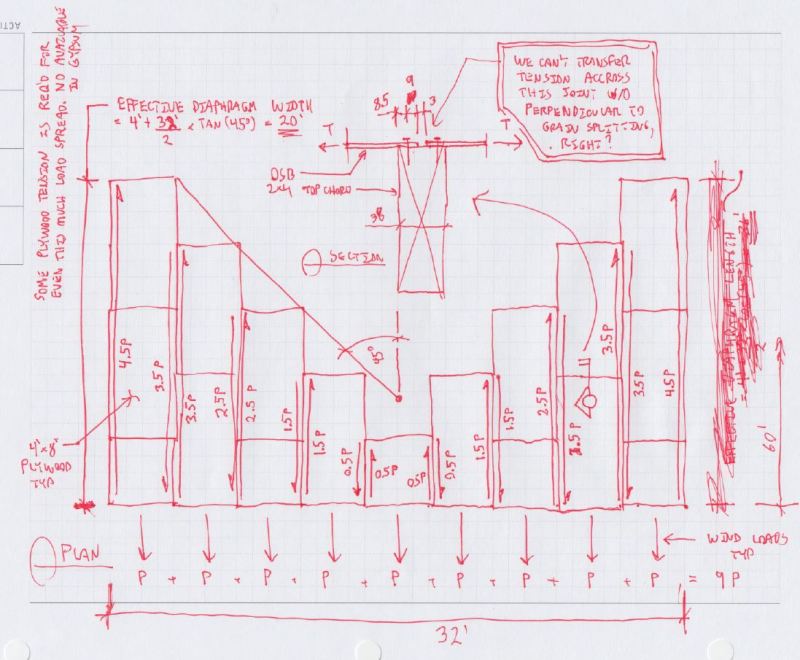StructENG82
Structural
We have some conflicting opinions in the office and I am hoping to see what others in the engineering community think. The situation is a 100' x 100' warehouse with stick framing, wood trusses and a plywood ceiling. The assumption that has been made is that for the ends of the building where the trusses run parallel to the wall a ledger board can be used used to transfer the load from the wall top plate to the plywood ceiling diaphragm. The diaphragm then transfers the load out to the corresponding shear walls. However, the difference in opinion is that 100' is to far to consider plywood ceiling to transfer out of plane forces and sub-diaphragms need to be created to transfer the load using blocking for the inward inward wind pressure and straps for the outward wind pressure. This wouldn't be needed in the opposite direction because the trusses are spanning perpendicular to the wall.
I know in seismic conditions for concrete and masonry walls with flexible diaphragms that sub-diaphragms are common (if not required) but I have not seen the need to create sub-diaphragms for stick framed buildings.
Do others commonly do this? Please let me know your thoughts.
I know in seismic conditions for concrete and masonry walls with flexible diaphragms that sub-diaphragms are common (if not required) but I have not seen the need to create sub-diaphragms for stick framed buildings.
Do others commonly do this? Please let me know your thoughts.

